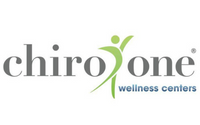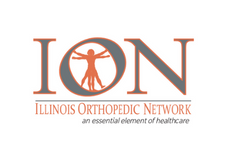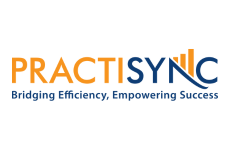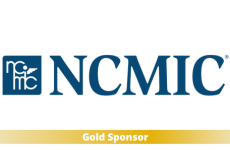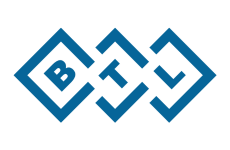
CMT Pre, Intra, and Post-Service Work Explanation
Editor’s Note: The ICS has an on-demand course with Dr. Gwilliam covering the entire -25 modifier issue and all of the tips here.
Learn how to document and bill CMT and E/M services correctly. Dr. Gwilliam’s toolkit helps chiropractic physicians separate and defend distinct services to ensure accurate, compliant payment.
Referenced Link:
E/M and CMT Bundling Prevention Toolkit
Transcript:
Marc:
So I’m here with Dr Gwilliam again, and we’re kind of doing this series and talking about the issues surrounding CMTs and E/Ms, and we’re talking about the RVU system, we’re talking about Pies, and we’re talking about all of the different things that kind of roll into this and some of the complexities and some of the problems that we have with the system and its design and its the valuation of the CMT, and we’ve talked about that in previous videos. But, all of this really points to an important piece, and that is the toolkit that Dr. Gwilliam put together to help our doctors do some specific things, whether it be in their documentation, on their claim forms, specifically to clearly identify when they’re doing an exam on the same day as an adjustment that they’re distinguishing the two of them as separate and distinct, which is a requirement under all of the rules for coding and for getting paid. And so we want to make sure that you’re equipped with the right information to be able to be appropriately paid for the services you’re performing. All of that to say one of the things that we’ve mentioned a couple of times, but haven’t really gone into your depth, Doctor is dealing with those things that a doctor does just before an adjustment, during an adjustment and after an adjustment, that the CPT system considers to all be a part of the adjustment, which is some of the challenge here when we start talking about E/M, right. So talk to us about the pre, intra, and post service work that is rolled into a CMT.
Dr. Gwilliam:
Yeah, so if you do a deep dive into the guidelines for the CMT codes, chiropractic manipulative treatment, they explain that it includes pre-service, in-service, and post-service. And if I may, use my pie metaphor again, although I’m going to switch, I’m gonna do apple pie, because I prefer apple pie. You’ve got you’ve got the crust, you’ve got the filling, and maybe you’ve got the crumbles on top or something. So there’s multiple elements that go into this pie to make it what it is, and that’s sort of how they explain what is included in a CMT service. There’s the pre-service, which might be the crust, and it’s everything you do to determine if the patient needs to be adjusted. It includes an evaluation, according to the guidelines. And by the way, this is in the CPT coding rules, but also entities like Blue Cross, Blue Shield of Illinois have reprinted it in their guidance for providers. So it’s, it’s the standard that we’re we’re held to. So it’s, it’s important for you to become familiar with what these rules are, so you know what you’re dealing with. And when you get into the toolkit, if I tell you what’s included, then you can better articulate what isn’t, you know, and make it clear when you’re trying to separate these out. So it’s important to understand this.
So in the pre-service, you evaluate the patient’s documentation, and you look through the record. That’s part of what’s included with an adjustment, you look over, you might review the imaging or your documentation about what you found in the imaging. It also includes interpreting any tests or care planning, which is verbiage, that’s a little bit tough, because all they say is care planning, which could be pretty exhaustive, in my opinion, but that’s included in the pre-service. So that might be looking at the patient going, you know, what we’ve been planning to see twice a week. I think we’re going to stick with that, like, that’s an example. Then there’s the service itself, applying the treatment, that’s a given. There’s also the palpation, the actual manipulation itself, the assessment of after you’ve done the adjustment to make sure it did what you hope to accomplish. That’s the intra-service work. And then after you’re done, it includes the post service work, which would include doing the documentation, the soap note, basically, where you say we did an adjustment and we are making sure we don’t want to modify our plan where it includes, in their words, the plan consultation reporting, which, as far as I know, they don’t elaborate on. So I’m going to interpret that to just mean I had a plan to adjust the patient twice a week for a while to see what the results might be. And I’m going to stick with that. That’s my plan consultation, reporting. But to say all that, that’s everything that’s included, that’s that whole pie. Is there something else besides it? Is there anything outside of that pie? And if so, can I make that really, really clear? So I’ve got all those elements, I’ve got all the ingredients. I’ve got a good, solid pie there. Now I need to make it very, very clear, the pie is done. It’s made, what’s next, what’s separate?
Marc:
That’s super important, doc, right? So, and this is where the insurance companies have leveraged this information to their benefit. This is where they utilize these components in order to say, no, no, all of that examination work that you just did, all of the extra work that you did, all of the thorough examination that you just performed on the patient before you did your CMT, all of that really is a part of the CMT. So we’re only going to pay you just for the CMT, and we’ve already given you the arguments on and the breakdown on the RVU system. We’ve given the arguments on the valuation problem, as at least I see it, and I believe Dr. Gwilliam, as you see it, too, because of the unequal valuations on the things that they’re bundling. But this is really important to understand. And you call it out, great and you addressed it in the toolkit that we’ve released, too, in all of these components, where we’re telling the story, both in claim form and in the documentation, is how these things are separate and why it’s important to kind of pull them apart and call them out separately as well, to make sure it’s abundantly clear to where nobody can say that, hey, this is a part of the pre service, or this is a part of the intra service, so this is part of the you’re breaking it apart, right? And that’s incredibly important to do. And these components are also super important to understand.
Dr. Gwilliam:
Yeah, the toolkit addresses not just how to do that in the documentation, but also on the claim form itself, and how to just say this is the part that’s included. Done it. Here’s everything else, and that’s really key to making sure you can get paid and defend if they do deny and try to bundle.
Marc:
Yeah, that’s super important. So take a look. We’ll include a link down below to the toolkit. And it’s long, and that’s a warning, but it’s also telling us long for purpose. It’s not just long for the sake of long. You have to understand this is one of the things that’s in there. You have to understand what is included here, so that you understand why the tips that are included at the end, that Dr. Gwilliam is included at the end, lay out all of the important things and why these things are important. We believe you provide a good and valuable service. You deserve to be paid for those services appropriately, and that’s why we’re doing this video series. That’s why the toolkits out there, we want you to get paid. So we’ll catch you next week. Thanks.









